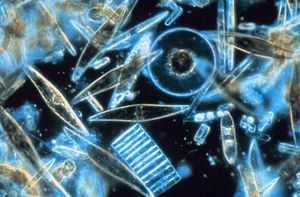MIT, News | March 15, 2017
Plankton can save the ocean. But who will save the plankton?

By Lauren Hinkel
When it comes to climate change and the oceans, MIT Principal Research Scientist Stephanie Dutkiewicz weighs in on why it’s not just warming oceans we need to worry about. Plankton — that are crucial for carbon sequestration and oxygen production — have been discovered behaving strangely, but they may point the way to better geoengineering and understanding of trends in marine populations and ecology.
Dutkiewicz’s research examines how the physics and chemistry of the ocean determines phytoplankton biogeography, and how in turn those organisms affect their environment.
Read her comments in New Scientist.




